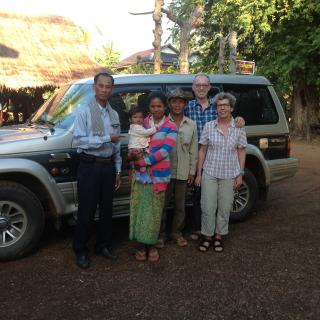


.jpg)









Carbon 14 dating of a cave at Laang Spean in northwest Cambodia reveals people who made pots were living in Cambodia as early as 4200 B.C.E. (Before the Common Era).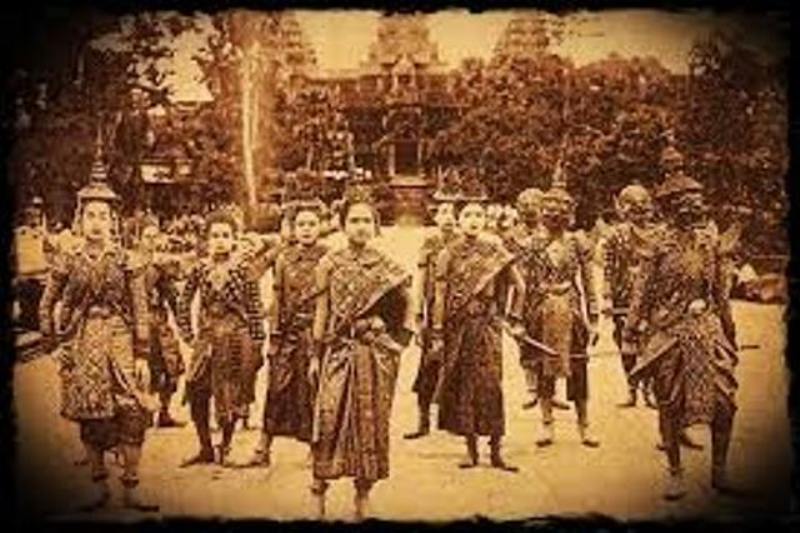 Further archaeological evidence indicates that other parts of the region now called Cambodia was inhabited from around 1000-2000 B.C.E. by a Neolithic culture. Skulls and human bones found at Sam Ron Sen date from 1500 B.C.E. These people may have migrated from South Eastern China to the Indochinese Peninsula, although some scholars maintain they may have come from India. Scholars trace the first cultivation of rice and the first bronze making in Southeast Asia to these people. By the first century CE, the inhabitants had developed relatively stable, organized societies and spoke languages very much related to the Cambodian or Khmer of the present day. The culture and technical skills of these people of the first century in the Common Era far surpassed the primitive stage. The most advanced groups lived along the coast and in the lower Mekong River valley and delta regions in houses constructed on stilts where they cultivated rice, fished and kept domesticated animals. Recent research has unlocked the discovery of artificial circular earthworks dating to Cambodia's Neolithic era. The Khmer people were one of the first inhabitants of South East Asia. They were also among the first in South East Asia to adopt religious ideas and political institutions from India and to establish centralized kingdoms surrounding large territories. The earliest known kingdom in the area, Funan, flourished from around the first to the sixth century AD. This was succeeded by Chenla, which controlled large parts of modern Cambodia, Vietnam, Laos, and Thailand. The history and civilization of the Khmer began 1stA.D with its forerunners, the states of the Funan and Chenla. It reached its peak of dominance in the years 802-1432 with the Empire of Angkor. Thereafter the Khmer Empire went into a long and painful decline which was only relieved by a glimmer of its past glory during the rule of the King Norodom Sihanouk from (1941-1970).
Further archaeological evidence indicates that other parts of the region now called Cambodia was inhabited from around 1000-2000 B.C.E. by a Neolithic culture. Skulls and human bones found at Sam Ron Sen date from 1500 B.C.E. These people may have migrated from South Eastern China to the Indochinese Peninsula, although some scholars maintain they may have come from India. Scholars trace the first cultivation of rice and the first bronze making in Southeast Asia to these people. By the first century CE, the inhabitants had developed relatively stable, organized societies and spoke languages very much related to the Cambodian or Khmer of the present day. The culture and technical skills of these people of the first century in the Common Era far surpassed the primitive stage. The most advanced groups lived along the coast and in the lower Mekong River valley and delta regions in houses constructed on stilts where they cultivated rice, fished and kept domesticated animals. Recent research has unlocked the discovery of artificial circular earthworks dating to Cambodia's Neolithic era. The Khmer people were one of the first inhabitants of South East Asia. They were also among the first in South East Asia to adopt religious ideas and political institutions from India and to establish centralized kingdoms surrounding large territories. The earliest known kingdom in the area, Funan, flourished from around the first to the sixth century AD. This was succeeded by Chenla, which controlled large parts of modern Cambodia, Vietnam, Laos, and Thailand. The history and civilization of the Khmer began 1stA.D with its forerunners, the states of the Funan and Chenla. It reached its peak of dominance in the years 802-1432 with the Empire of Angkor. Thereafter the Khmer Empire went into a long and painful decline which was only relieved by a glimmer of its past glory during the rule of the King Norodom Sihanouk from (1941-1970).
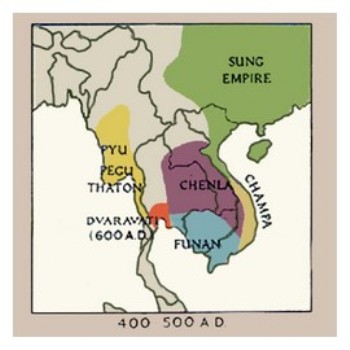 Funan Empire (1st- 6th) “50 - 550 A.D”: The name of this empire was interpreted pretend by Chinese. It was heavily influenced by the Indian civilization in terms of customs, traditions, religions, and architecture. Funan was one of the earliest Indianite settlements in mainland South-east Asia. It was located in the area of the lower Mekong Delta of the Southern part of the Cambodia, Prey Veng province to-day. The inhabitants of this historic state are believed to have been a tribe which spoke a tongue from the Mon-Khmer family of the languages, which provides a linguistic source for the Cambodians as early as the beginning of the Christian-Era. The Funaneses were seafarers, merchants, and farmers. They were artistic and hard-working people. The people were described as crinkly-haired, brown-skinned, ugly and in the early encounters, unclothed.
Funan Empire (1st- 6th) “50 - 550 A.D”: The name of this empire was interpreted pretend by Chinese. It was heavily influenced by the Indian civilization in terms of customs, traditions, religions, and architecture. Funan was one of the earliest Indianite settlements in mainland South-east Asia. It was located in the area of the lower Mekong Delta of the Southern part of the Cambodia, Prey Veng province to-day. The inhabitants of this historic state are believed to have been a tribe which spoke a tongue from the Mon-Khmer family of the languages, which provides a linguistic source for the Cambodians as early as the beginning of the Christian-Era. The Funaneses were seafarers, merchants, and farmers. They were artistic and hard-working people. The people were described as crinkly-haired, brown-skinned, ugly and in the early encounters, unclothed.
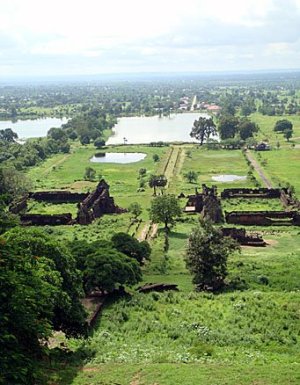 Chenla Empire (550 - 766 A.D): Civil war undermined the stability of Funan and by the early sixth century the central political power had shifted inland. Chinese records mention the emergence of a new state called Zhenla (Chenla) in the mid of the sixth century, situated on the Mekong in the area of central low land of Mekong River in Basac, Wat Phu in Laos and south-west of Vietnam to-day. It seems to have gained control of Funan and extended its territorial boundaries to border of today’s Vietnam in the north-east and as far as Southern China in the North. Sometime in the 8 century, rivalry forced Zhenla to split into two parts, according to Chinese records. Zhenla of land and Zhenla of water.
Chenla Empire (550 - 766 A.D): Civil war undermined the stability of Funan and by the early sixth century the central political power had shifted inland. Chinese records mention the emergence of a new state called Zhenla (Chenla) in the mid of the sixth century, situated on the Mekong in the area of central low land of Mekong River in Basac, Wat Phu in Laos and south-west of Vietnam to-day. It seems to have gained control of Funan and extended its territorial boundaries to border of today’s Vietnam in the north-east and as far as Southern China in the North. Sometime in the 8 century, rivalry forced Zhenla to split into two parts, according to Chinese records. Zhenla of land and Zhenla of water.
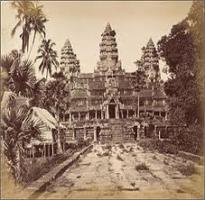 The Khmer Empire of Angkor (9th–15th) (802 – 1432 A.D): The generally accepted dates for the Angkor period are (802-1432). It began when King Jayavarman II returned from the court in Java in the year 790 AD. According to, the Sdok Kak Thom inscription, dating from the middle of the 11th century, some two hundred years after his reign. It says that he spent some time at the court of Buddhist Shailendra Dynasty in Indonesia before returning to Khmer. According to Arab merchant, the King of Shailendra Dynasty staged a surprise attack on the Khmer by approaching the capital from the river and the Great Lake. The young Khmer King was beheaded and the Khmer became a vassal state of Java. So it could be that Jayavarman II was taken to Indonesia as a prisoner at that time. He repatriated to Khmer was to reject Javanese control over the Southern lands of Khmer. He asserted his control and power through military campaigns to extend the area of his territorial jurisdiction and to consolidate small principalities before establishing a capital of Indra-Pura. He then moved his base three more times. The reasons are for the better source of food. One of the locations was Kutisvara (Banteay-kdei temple), Hari-Hara-laya, Amarendrapura (Ak Yum Temple to-day) and the last capital was Mahendraparvata, Kulen Mountain today, 53 kilometers north-east of Siem Reap. The inscriptions say Jayavarman II proclaimed himself “World Emperor” in 802 AD. He unified the Khmer state, the declaration of its independence from Indonesia, and the beginning of Angkor period. At that time, Jayavarman II established a new religious belief, the Devaraja (God-King) cult. Soon afterwards he moved the capital back to Hari-Haralaya (Rolous-today) where he ruled until his death in the year 850. The successive kings after king Jayavarman II continued to unify and expand the Khmer Empire. The inscriptions give the name of 39 Kings from Angkor period. Seven of these, selected for worthy achievements and the mark they left on Khmer civilization.
The Khmer Empire of Angkor (9th–15th) (802 – 1432 A.D): The generally accepted dates for the Angkor period are (802-1432). It began when King Jayavarman II returned from the court in Java in the year 790 AD. According to, the Sdok Kak Thom inscription, dating from the middle of the 11th century, some two hundred years after his reign. It says that he spent some time at the court of Buddhist Shailendra Dynasty in Indonesia before returning to Khmer. According to Arab merchant, the King of Shailendra Dynasty staged a surprise attack on the Khmer by approaching the capital from the river and the Great Lake. The young Khmer King was beheaded and the Khmer became a vassal state of Java. So it could be that Jayavarman II was taken to Indonesia as a prisoner at that time. He repatriated to Khmer was to reject Javanese control over the Southern lands of Khmer. He asserted his control and power through military campaigns to extend the area of his territorial jurisdiction and to consolidate small principalities before establishing a capital of Indra-Pura. He then moved his base three more times. The reasons are for the better source of food. One of the locations was Kutisvara (Banteay-kdei temple), Hari-Hara-laya, Amarendrapura (Ak Yum Temple to-day) and the last capital was Mahendraparvata, Kulen Mountain today, 53 kilometers north-east of Siem Reap. The inscriptions say Jayavarman II proclaimed himself “World Emperor” in 802 AD. He unified the Khmer state, the declaration of its independence from Indonesia, and the beginning of Angkor period. At that time, Jayavarman II established a new religious belief, the Devaraja (God-King) cult. Soon afterwards he moved the capital back to Hari-Haralaya (Rolous-today) where he ruled until his death in the year 850. The successive kings after king Jayavarman II continued to unify and expand the Khmer Empire. The inscriptions give the name of 39 Kings from Angkor period. Seven of these, selected for worthy achievements and the mark they left on Khmer civilization.
1. Indravarman I (877–889) built Bakong temple, a temple mountain.
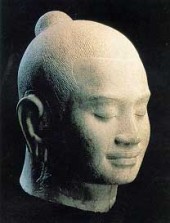 2. Yasovarman I (889–910) built Bakheng as his state temple-mountain on a natural hill which located in the centre of capital Yasodharapura. 3. Jayavarman IV (924–944) built capital Koh Ker.
2. Yasovarman I (889–910) built Bakheng as his state temple-mountain on a natural hill which located in the centre of capital Yasodharapura. 3. Jayavarman IV (924–944) built capital Koh Ker.
4. Rajendravarman II (944–968) built his state temple, Pre Rup.
5. Suryavarman I (1002–1050) he expanded the Khmer Empire reached its greatest degree of territorial expansion.
6. Suryavarman II (1113–1150) was one of the most brilliant of the Khmer rulers and the builder of the great temple of Angkor Wat.
7. Jayavarman VII (1181–1219) he undertook a massive building program and is accredited for constructing more temples, roads, bridges, and rest houses than all the other Kings put together. He was a devout follower of Mahayana Buddhism and this dedication permeated every aspect of his reign. The Kings of Angkor were the owners of the land and they alone could use it as they wished. They also had power over the water and thus procured the fertility of the soil, and the well-being of the country and of their subjects. In this way they controlled all the materials and intellectual resources of the state and its people.

Decline and Fall: After the death of King Jayavarman VII, Khmer forces began to be pushed back from their foreign conquests such as are Champa and Sukhothai in central Thailand. The 13th century was a time of the great change in the Khmer society, as well as in the south-east Asia in general. During the reign of King Jayavarman VIII (1243–1295) there was a strong resurgence of the Hinduism faction in the Angkor court and a vigorous reaction against Buddhism, which had held sway under Jayavarman VII. In the 13th century, Theravada Buddhism replaced Hinduism & Mahayana Buddhism as the spiritual foundation of the empire. The irrigation network was over worked and slowly starting to silt up due to the massive deforestation that had taken place in the heavily populated areas to the north-east of Angkor. Massive construction projects such Angkor Wat, Angkor Thom; no doubt put an enormous strain on the Royal coffers and on thousands of slaves and common people who subsidized them in hard work and taxes. Another important aspect of this period was the decline of Cambodian political influence on the peripheries of its empire. The constants quarrel between the leader and Royal family that became a more political football between its neighbors, Siam and Vietnam. The social infrastructure and cultural norms were destroyed, and a lot of people were caught as hostages and killed.
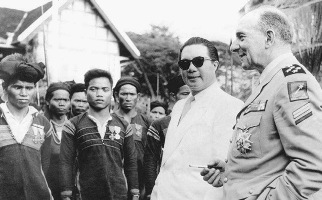 The Dark Ages: From 16th century until the arrival of the French in 1863, Cambodia was ruled by a series of weak Kings who, because of continual changes by dissident members of the Royal family, were forced to seek the protection-granted, of-course, at a price of either Thailand or Vietnam. With the reign of King Satha (1576–1595) began an eventful but troubled period for Cambodia. In the 17th century assistance from the southern Vietnam prince was given on the proviso that Vietnamese be allowed to settle in what is on the Mekong Delta region of Vietnam, at that time part was Kampucheakrom. In the west, back then Thai controlled the provinces of Battambang, Siem Reap and Angkor Wat in 1794.
The Dark Ages: From 16th century until the arrival of the French in 1863, Cambodia was ruled by a series of weak Kings who, because of continual changes by dissident members of the Royal family, were forced to seek the protection-granted, of-course, at a price of either Thailand or Vietnam. With the reign of King Satha (1576–1595) began an eventful but troubled period for Cambodia. In the 17th century assistance from the southern Vietnam prince was given on the proviso that Vietnamese be allowed to settle in what is on the Mekong Delta region of Vietnam, at that time part was Kampucheakrom. In the west, back then Thai controlled the provinces of Battambang, Siem Reap and Angkor Wat in 1794.
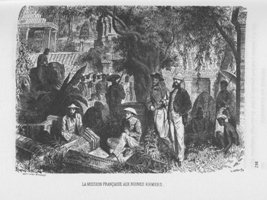 The western pilgrims to Angkor: The ruins of Angkor were reported by many foreigners as early as the 16th century. The earliest Europeans came to see Angkor. Numerous overseas traders from China, Japan, Arabia, Spain and Portugal resided in Phnom Penh and Lovek in the 16th century. The earliest and most detailed account of Angkor was by the Portuguese writer Diego Do Couto, who described about the daily life of Cambodian Kings in the 16thcentury. In 1585 came two Portugueses named Antonio de Magdalena and Capuchin Friar. In the 17th century, the Spanish visited Angkor Wat. Marcelo de Ribadeneira in a description of the Angkor published it in 1601. In the year 1606, Christ oval de Jague visited Angkor Wat and Angkor Thom City. Then the Japanese named Kenryo Shimanoth came to Angkor
The western pilgrims to Angkor: The ruins of Angkor were reported by many foreigners as early as the 16th century. The earliest Europeans came to see Angkor. Numerous overseas traders from China, Japan, Arabia, Spain and Portugal resided in Phnom Penh and Lovek in the 16th century. The earliest and most detailed account of Angkor was by the Portuguese writer Diego Do Couto, who described about the daily life of Cambodian Kings in the 16thcentury. In 1585 came two Portugueses named Antonio de Magdalena and Capuchin Friar. In the 17th century, the Spanish visited Angkor Wat. Marcelo de Ribadeneira in a description of the Angkor published it in 1601. In the year 1606, Christ oval de Jague visited Angkor Wat and Angkor Thom City. Then the Japanese named Kenryo Shimanoth came to Angkor 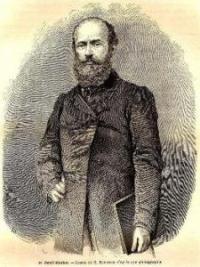 in the 17th century, 1632 A.D and he wrote about calligraphic characters, plan on a pillar on the second level of Angkor. He called Angkor, Jetavana vihara, a Buddhist site in India. Later on his son named Morimoto URondayu visited the great Angkor during the 17th century. Charles-Emile Bouilleaux, a French missionary, saw Angkor Wat in the year 1854. Dr. A House, an American missionary and long-time resident of Saim, wrote about Angkor Wat in 1855. Do King, an Englishman who traveled in Indo-China in 1857-8, detailed his journey in a paper read to the Royal Geographical Society in London in 1859. Henri Mouhot, a French naturalist, reported on his visit. At that time he planned his trip to the east he was living in Jersey with his Scottish wife. He gained the support of the Royal Geographical Society in London. He departed for Singapore in April 1853 and arrived in Siam in September. Three months later he set off on journey that continued until April 1860. During that time he spent two months in Cambodia, 3 weeks at Angkor. He surveyed and measured the temple of Angkor Wat and kept detailed notes on his observations of the ruins. He continued his work until November 1861 when he contracted a fever of malaria and died in Luang Prabang in Laos at the age of 35 years old. His notes were taken to Bangkok by his faithful servants and later sent his widow and brother in Jersey where they were published in 1864 called (Le Tour du Mond). In his diaries he claimed Angkor’s ruins were grandeur than those of ancient Greece or Rome. He raved about a monument equal to the temple of Solomon, erected by some ancient Michelangelo. Cambodia was under the French protectorate in the year of 1864.
in the 17th century, 1632 A.D and he wrote about calligraphic characters, plan on a pillar on the second level of Angkor. He called Angkor, Jetavana vihara, a Buddhist site in India. Later on his son named Morimoto URondayu visited the great Angkor during the 17th century. Charles-Emile Bouilleaux, a French missionary, saw Angkor Wat in the year 1854. Dr. A House, an American missionary and long-time resident of Saim, wrote about Angkor Wat in 1855. Do King, an Englishman who traveled in Indo-China in 1857-8, detailed his journey in a paper read to the Royal Geographical Society in London in 1859. Henri Mouhot, a French naturalist, reported on his visit. At that time he planned his trip to the east he was living in Jersey with his Scottish wife. He gained the support of the Royal Geographical Society in London. He departed for Singapore in April 1853 and arrived in Siam in September. Three months later he set off on journey that continued until April 1860. During that time he spent two months in Cambodia, 3 weeks at Angkor. He surveyed and measured the temple of Angkor Wat and kept detailed notes on his observations of the ruins. He continued his work until November 1861 when he contracted a fever of malaria and died in Luang Prabang in Laos at the age of 35 years old. His notes were taken to Bangkok by his faithful servants and later sent his widow and brother in Jersey where they were published in 1864 called (Le Tour du Mond). In his diaries he claimed Angkor’s ruins were grandeur than those of ancient Greece or Rome. He raved about a monument equal to the temple of Solomon, erected by some ancient Michelangelo. Cambodia was under the French protectorate in the year of 1864.
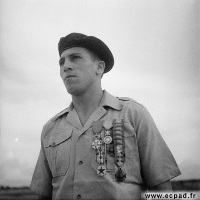 Cambodia in the French Rule: Cambodia’s long period of bouncing back and forth between Thailand and Vietnamese masters ended in 1864, when French gunboats intimidated King Norodom 1860–1904 into signing a treaty of protectorate. French control of Cambodia, which developed as a sideshow to French-colonial interests in Vietnam, initially involved little direct interference in Cambodia’s affairs. More importantly, the French presence prevented Cambodia’s expansionist neighbors from annexing any more Khmer territory and helped keep King Norodom on throne despite the ambitions of his rebellious half-brothers. By the 1870s French began pressing for greater control over internal affairs, and 1884, Norodom was forced into signing a treaty that turned his country into a French colony. This sparked a two-year rebellion that constituted the only major anti-French movement in Cambodia until after World War II. This uprising ended when the king was persuaded to call upon the rebel fighters to lay down their weapons in exchange for return to the pre treaty arrangement. During the next two decades, Cambodian officials, who saw certain advantages in acquiescing to French power, opened the door to direct French control over the day-to-day administration of the country. The French maintained and took care of Cambodian monarchy. They put a pressure on Thailand into returning Battambang, Siem Reap, and Sisophon in 1907 to Cambodia. King Norodom was succeeded by king Sisovath 1904–1927, who was succeeded by king Monivong 1927–1941. Upon king Monivong’s death, the French-governor general named Admiral Jean Decoux, placed 19 year-old prince Norodom Sihanouk on the Cambodian throne.
Cambodia in the French Rule: Cambodia’s long period of bouncing back and forth between Thailand and Vietnamese masters ended in 1864, when French gunboats intimidated King Norodom 1860–1904 into signing a treaty of protectorate. French control of Cambodia, which developed as a sideshow to French-colonial interests in Vietnam, initially involved little direct interference in Cambodia’s affairs. More importantly, the French presence prevented Cambodia’s expansionist neighbors from annexing any more Khmer territory and helped keep King Norodom on throne despite the ambitions of his rebellious half-brothers. By the 1870s French began pressing for greater control over internal affairs, and 1884, Norodom was forced into signing a treaty that turned his country into a French colony. This sparked a two-year rebellion that constituted the only major anti-French movement in Cambodia until after World War II. This uprising ended when the king was persuaded to call upon the rebel fighters to lay down their weapons in exchange for return to the pre treaty arrangement. During the next two decades, Cambodian officials, who saw certain advantages in acquiescing to French power, opened the door to direct French control over the day-to-day administration of the country. The French maintained and took care of Cambodian monarchy. They put a pressure on Thailand into returning Battambang, Siem Reap, and Sisophon in 1907 to Cambodia. King Norodom was succeeded by king Sisovath 1904–1927, who was succeeded by king Monivong 1927–1941. Upon king Monivong’s death, the French-governor general named Admiral Jean Decoux, placed 19 year-old prince Norodom Sihanouk on the Cambodian throne.
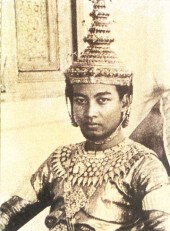 Independence and Sihanouk’s rule: Prince Norodom Sihanouk, of the Norodom Dynasty, was born in 1922, and received his education from French in Saigon. In 1941 he was crowned, at just 19, in succession to his grandfather by passing his father. The 19-year-old king very rapidly developed diplomatic skills. He became a determined opponent of French colonialism and adroit Champion of Cambodian Independence. In 1945 he accepted an offer of independence made by the Japanese, but Japan surrendered in the same year and was occupied by French and British troops. In 1946 king Sihanouk reached in agreement with French where by Cambodia became a member of the French Union. In 1953 he succeeded in persuading French to grant him authority over the police, the judiciary and the army. In 1954 the French army was defeated at Dien Bien Phu, Vietnam. Independence was proclaimed on 9th November 1953 and recognized by the Geneva Conference of May 1954, which ended French control of Indochina. In 1955, Sihanouk abdicated, afraid of being marginalized amid the pomp of Royal Ceremony. He turned his attention to politics, winning every seat in the parliament. His newly established party was Sangkum Reastr Niyum (People’s Socialist Communist Party) in September 1955. He became Prime Minister or Head of State for the next 15 years. During his period, after innumerable love affairs, he finally settled on Monique Izzi, the daughter of French-Italian father and a Vietnamese mother, as his consort. During his reign he constructed a lot of special social infrastructural buildings, 120 kilometers, especially schools and hospitals. He sent the young elite to France to study and train including Saloth Sar, who later called himself Pol Pot, as well as Kiev Samphan and Ieng Sary, who became communist in Paris, and later led the Khmer Rouge. Later on from 1960-1970, Sihanouk was in the uncontrolled political situation, and his country was in the doomed situation which fell in huge disaster. On 18 March 1970, the National Assembly voted to remove Sihanouk from office. When Sihanouk was on a trip to France, General Lon Nol, Cheng Heng, and Prince Sisovath Sirikmatak, Sihanouk’s cousin, deposed him as Chief State, apparently with tacit US tacit consent. Sihanouk went into exile in Beijing and joined the communists. Following the Khmer Rouge Victory on 17th April 1975, Sihanouk was confined to the Royal Palace as a prisoner of the Khmer Rouge. He remained there until early 1979 when, on the eve of the Vietnamese invasion, he was flown back to Beijing. It was to be more than a decade before Sihanouk finally returned to Cambodia in 1993. On 24 September 1993, after 38 years in politics, he took on once again the role of king. On 7th October 2004, Sihanouk abdicated because of old age, failing health. His son Sihamoni ascended the royal throne.
Independence and Sihanouk’s rule: Prince Norodom Sihanouk, of the Norodom Dynasty, was born in 1922, and received his education from French in Saigon. In 1941 he was crowned, at just 19, in succession to his grandfather by passing his father. The 19-year-old king very rapidly developed diplomatic skills. He became a determined opponent of French colonialism and adroit Champion of Cambodian Independence. In 1945 he accepted an offer of independence made by the Japanese, but Japan surrendered in the same year and was occupied by French and British troops. In 1946 king Sihanouk reached in agreement with French where by Cambodia became a member of the French Union. In 1953 he succeeded in persuading French to grant him authority over the police, the judiciary and the army. In 1954 the French army was defeated at Dien Bien Phu, Vietnam. Independence was proclaimed on 9th November 1953 and recognized by the Geneva Conference of May 1954, which ended French control of Indochina. In 1955, Sihanouk abdicated, afraid of being marginalized amid the pomp of Royal Ceremony. He turned his attention to politics, winning every seat in the parliament. His newly established party was Sangkum Reastr Niyum (People’s Socialist Communist Party) in September 1955. He became Prime Minister or Head of State for the next 15 years. During his period, after innumerable love affairs, he finally settled on Monique Izzi, the daughter of French-Italian father and a Vietnamese mother, as his consort. During his reign he constructed a lot of special social infrastructural buildings, 120 kilometers, especially schools and hospitals. He sent the young elite to France to study and train including Saloth Sar, who later called himself Pol Pot, as well as Kiev Samphan and Ieng Sary, who became communist in Paris, and later led the Khmer Rouge. Later on from 1960-1970, Sihanouk was in the uncontrolled political situation, and his country was in the doomed situation which fell in huge disaster. On 18 March 1970, the National Assembly voted to remove Sihanouk from office. When Sihanouk was on a trip to France, General Lon Nol, Cheng Heng, and Prince Sisovath Sirikmatak, Sihanouk’s cousin, deposed him as Chief State, apparently with tacit US tacit consent. Sihanouk went into exile in Beijing and joined the communists. Following the Khmer Rouge Victory on 17th April 1975, Sihanouk was confined to the Royal Palace as a prisoner of the Khmer Rouge. He remained there until early 1979 when, on the eve of the Vietnamese invasion, he was flown back to Beijing. It was to be more than a decade before Sihanouk finally returned to Cambodia in 1993. On 24 September 1993, after 38 years in politics, he took on once again the role of king. On 7th October 2004, Sihanouk abdicated because of old age, failing health. His son Sihamoni ascended the royal throne.
.jpg) The Lon Nol Regime (1970-1975): It was called Khmer Republic, Sihanouk was condemned to death in absentia, and an excessive move on the part of the new government that effectively ruled out any chance for compromise over the next five years. On the 18th March 1970 Lon Nol became the new head of state, he established a military court and expanded three-fold general mobilization decreed, the republic was suspended and a state of emergency declared. Lon Nol gave communist Vietnamese forces an ultimatum to withdraw their forces within one week, which amounted to a virtual declaration of war, as no communists wanted to return to the homeland to face the Americans. On the 30th April 1970, U.S and South Vietnamese forces invaded Cambodia in an effort to flush out thousands of Vietcong and North Vietnamese troops were using Cambodia bases in their war to overthrow the Southern Vietnamese Government. As a result of the invasion, the Vietnamese communist withdrew deeper into Cambodia, thus posing an even greater threat to Lon Nol Government. Cambodia’s tiny army never stood on a chance and within the space of a few months, Vietnamese forces and their Khmer Rouge allies controlled almost half the country. The ultimate humiliation came in July 1970 when the Vietnamese seized Angkor Wat. In 1969 the USA had begun a secret program of bombing suspected communist base camps in Cambodia. For the next 4 years, until bombing was halted by the U.S congress in August 1973, huge areas of the eastern half of the country were carpet-bombed by U.S B-52s , killing them as many as 250.000 Cambodians and turning hundreds of thousands more into refugees. Undoubtedly, the bombing campaign helped the Khmer rouge in their recruitment drive, as more and more peasants were losing family members to the aerial assaults. While the final heaviest bombing in the first half of 1973 may have saved Phnom Penh from a premature fall, its ferocity also helped to harden to attitude of many Khmer Rouge cadres and may have contributed to the later brutality of the regime. People fled to the rural areas for the relative safety of Phnom Penh and provincial capitals. Between 1970-1975, several hundred thousand people died in the fighting. During these years the Khmer Rouge came to play a dominant role in trying to over throw the Lon Nol regime, strengthened by the support of the Vietnamese, although the Khmer Rouge leadership would vehemently deny this from 1975-1979 onwards. The country was in chaotic situation because of the upheaval politics. Lon Nol never succeeded in gaining the initiative against the Khmer Rouge, which pursued a strategy of rural attrition. Large parts of the countryside fell to the rebels and many provincial capitals were cut off from Phnom Penh. Lon Nol fled the country in early April 1975; leave Sirik Matak in charge, which refused evacuation to the end. “I can’t alas leave in such a cowardly fashion…I have committed only one mistake that of believing in you, the Americans use the words Sirik Matak poignantly penned to U.S ambassador John Gunther Dean.”
The Lon Nol Regime (1970-1975): It was called Khmer Republic, Sihanouk was condemned to death in absentia, and an excessive move on the part of the new government that effectively ruled out any chance for compromise over the next five years. On the 18th March 1970 Lon Nol became the new head of state, he established a military court and expanded three-fold general mobilization decreed, the republic was suspended and a state of emergency declared. Lon Nol gave communist Vietnamese forces an ultimatum to withdraw their forces within one week, which amounted to a virtual declaration of war, as no communists wanted to return to the homeland to face the Americans. On the 30th April 1970, U.S and South Vietnamese forces invaded Cambodia in an effort to flush out thousands of Vietcong and North Vietnamese troops were using Cambodia bases in their war to overthrow the Southern Vietnamese Government. As a result of the invasion, the Vietnamese communist withdrew deeper into Cambodia, thus posing an even greater threat to Lon Nol Government. Cambodia’s tiny army never stood on a chance and within the space of a few months, Vietnamese forces and their Khmer Rouge allies controlled almost half the country. The ultimate humiliation came in July 1970 when the Vietnamese seized Angkor Wat. In 1969 the USA had begun a secret program of bombing suspected communist base camps in Cambodia. For the next 4 years, until bombing was halted by the U.S congress in August 1973, huge areas of the eastern half of the country were carpet-bombed by U.S B-52s , killing them as many as 250.000 Cambodians and turning hundreds of thousands more into refugees. Undoubtedly, the bombing campaign helped the Khmer rouge in their recruitment drive, as more and more peasants were losing family members to the aerial assaults. While the final heaviest bombing in the first half of 1973 may have saved Phnom Penh from a premature fall, its ferocity also helped to harden to attitude of many Khmer Rouge cadres and may have contributed to the later brutality of the regime. People fled to the rural areas for the relative safety of Phnom Penh and provincial capitals. Between 1970-1975, several hundred thousand people died in the fighting. During these years the Khmer Rouge came to play a dominant role in trying to over throw the Lon Nol regime, strengthened by the support of the Vietnamese, although the Khmer Rouge leadership would vehemently deny this from 1975-1979 onwards. The country was in chaotic situation because of the upheaval politics. Lon Nol never succeeded in gaining the initiative against the Khmer Rouge, which pursued a strategy of rural attrition. Large parts of the countryside fell to the rebels and many provincial capitals were cut off from Phnom Penh. Lon Nol fled the country in early April 1975; leave Sirik Matak in charge, which refused evacuation to the end. “I can’t alas leave in such a cowardly fashion…I have committed only one mistake that of believing in you, the Americans use the words Sirik Matak poignantly penned to U.S ambassador John Gunther Dean.”
 Khmer Rouge (1975-1979): From early year (1975-1979) when Khmer Rouge controlled Cambodia, the better experience of the darkest years in Cambodia history. Its goal was to transform Cambodia into a Maoist, peasant dominated agrarian cooperative. Another aim was to remove all differences between town people and peasants by destroying the centers of mercantile and capitalist activity. After they occupied the country, they excavated the people from the capital city, province to rural camp to do slave labor in the rice-fields for 10-12 per a day. The political program of the Khmer Rouge consisted of a brutal restructuring of society on strictly Maoist Lines. The advent of the Khmer Rouge rule was proclaimed Year Zero. It was a regime of racial genocide, and attempted cultural annihilation from which the country recovering. There are no precise figures for the number of lives lost in “Democratic Kampuchea” under the Khmer Rouge during the 3 years 8 months and 21 days. The Foreign Minister, Ieng Sary, spoke privately of a figure of two million. The highest price in blood was paid by the official corps, the intellectuals and priests of all religions. Hundreds of thousands more died of execution, starvation, overwork and disease. Anyone who spoke a foreign language or simply wore glasses was held to be a subversive or a parasite and usually paid with their lives. On 6th January 1979, after three years of house arrest, king Sihanouk was to flown back to Beijing by the Chinese, and on 7th January the Vietnamese marched into Phnom Penh so as to topple Pol Pot regime and push them out of the country. The Khmer Rouge, however, continued to attack Cambodia and thousands of landmines that killed and maimed Cambodia to-day.
Khmer Rouge (1975-1979): From early year (1975-1979) when Khmer Rouge controlled Cambodia, the better experience of the darkest years in Cambodia history. Its goal was to transform Cambodia into a Maoist, peasant dominated agrarian cooperative. Another aim was to remove all differences between town people and peasants by destroying the centers of mercantile and capitalist activity. After they occupied the country, they excavated the people from the capital city, province to rural camp to do slave labor in the rice-fields for 10-12 per a day. The political program of the Khmer Rouge consisted of a brutal restructuring of society on strictly Maoist Lines. The advent of the Khmer Rouge rule was proclaimed Year Zero. It was a regime of racial genocide, and attempted cultural annihilation from which the country recovering. There are no precise figures for the number of lives lost in “Democratic Kampuchea” under the Khmer Rouge during the 3 years 8 months and 21 days. The Foreign Minister, Ieng Sary, spoke privately of a figure of two million. The highest price in blood was paid by the official corps, the intellectuals and priests of all religions. Hundreds of thousands more died of execution, starvation, overwork and disease. Anyone who spoke a foreign language or simply wore glasses was held to be a subversive or a parasite and usually paid with their lives. On 6th January 1979, after three years of house arrest, king Sihanouk was to flown back to Beijing by the Chinese, and on 7th January the Vietnamese marched into Phnom Penh so as to topple Pol Pot regime and push them out of the country. The Khmer Rouge, however, continued to attack Cambodia and thousands of landmines that killed and maimed Cambodia to-day.
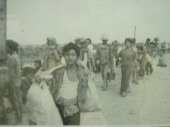 A background of blood brother number one: Pol Pot was born Salot Sar in a small village near Kompong Thom province in 1925. As a young man he won a scholarship to study in Paris and spent several years there with Ieng Sary, who would later become foreign minister. It is here he is believed to have developed his radical Marxist thought, later to transform into the politics of the extreme Maoist agrarianism. Pol Pot who is associated with bloody madness of the regime he had led between1975-1979, and his policies heaped misery, suffering and death on million of Cambodians. Even after being thrown in 1979 he cast a long shadow over the Cambodian for many of them, just knowing he was still alive was traumatic and unjust. He died on the 15 of April 1998. From year 1979-1989, Cambodia was named the People’s Republic of Kampuchea (under the Vietnamese backed Phnom Penh Government). From the middle of year 1989, Cambodia was called the State of Cambodia. In 1993 Cambodia was named the Kingdom of Cambodia. The first election was set according to plan on 23rd - 25th May 1993. It was supervised and organized by UN peace keeping forces “U.S, Japan and Germany.” In 1993, Cambodia became a full member of ASEAN. People's Republic of Kampuchea / State of
A background of blood brother number one: Pol Pot was born Salot Sar in a small village near Kompong Thom province in 1925. As a young man he won a scholarship to study in Paris and spent several years there with Ieng Sary, who would later become foreign minister. It is here he is believed to have developed his radical Marxist thought, later to transform into the politics of the extreme Maoist agrarianism. Pol Pot who is associated with bloody madness of the regime he had led between1975-1979, and his policies heaped misery, suffering and death on million of Cambodians. Even after being thrown in 1979 he cast a long shadow over the Cambodian for many of them, just knowing he was still alive was traumatic and unjust. He died on the 15 of April 1998. From year 1979-1989, Cambodia was named the People’s Republic of Kampuchea (under the Vietnamese backed Phnom Penh Government). From the middle of year 1989, Cambodia was called the State of Cambodia. In 1993 Cambodia was named the Kingdom of Cambodia. The first election was set according to plan on 23rd - 25th May 1993. It was supervised and organized by UN peace keeping forces “U.S, Japan and Germany.” In 1993, Cambodia became a full member of ASEAN. People's Republic of Kampuchea / State of  Cambodia (1979-1993). On January 10, 1979, after the Vietnamese army and the KUFNS invaded Cambodia, the new People's Republic of Kampuchea was established with Heng Samrin as head of state. Pol Pot's Khmer Rouge forces retreated rapidly to the Thai border. The Khmer Rouge and the PRK began a costly struggle that played into the hands of the larger powers China, the United States and the Soviet Union. A civil war was imposed on impoverished Cambodia that displaced 600,000 Cambodians to refugee camps along the border between Thailand and Cambodia. Peace efforts began in Paris in 1989 under the State of Cambodia, culminating two years later in October 1991 in a comprehensive peace settlement. The United Nations was given a mandate to enforce a ceasefire, and deal with refugees and disarmament known as the United Nations Transitional Authority in Cambodia (UNTAC).
Cambodia (1979-1993). On January 10, 1979, after the Vietnamese army and the KUFNS invaded Cambodia, the new People's Republic of Kampuchea was established with Heng Samrin as head of state. Pol Pot's Khmer Rouge forces retreated rapidly to the Thai border. The Khmer Rouge and the PRK began a costly struggle that played into the hands of the larger powers China, the United States and the Soviet Union. A civil war was imposed on impoverished Cambodia that displaced 600,000 Cambodians to refugee camps along the border between Thailand and Cambodia. Peace efforts began in Paris in 1989 under the State of Cambodia, culminating two years later in October 1991 in a comprehensive peace settlement. The United Nations was given a mandate to enforce a ceasefire, and deal with refugees and disarmament known as the United Nations Transitional Authority in Cambodia (UNTAC).
 The Modern Cambodia (1993-Present): On October 23, 1991, the Paris Conference reconvened to sign a comprehensive settlement giving the UN full authority to supervise a ceasefire, repatriate the displaced Khmer along the border with Thailand, disarm and demobilize the factional armies, and prepare the country for free and fair elections. Prince Sihanouk, President of the Supreme National Council of Cambodia (SNC), and other members of the SNC returned to Phnom Penh in November 1991, to begin the resettlement process in Cambodia. The UN Advance Mission for Cambodia (UNAMIC) was deployed at the same time to maintain liaison among the factions and begin demining operations to expedite the repatriation of approximately 370,000 Cambodians from Thailand. On March 16, 1992, the UN Transitional Authority in Cambodia (UNTAC) arrived in Cambodia to begin implementation of the UN Settlement Plan. The UN High Commissioner for Refugees began full-scale repatriation in March 1992. UNTAC grew into a 22,000-strong civilian and military peacekeeping force to conduct free and fair elections for a constituent assembly. Over 4 million Cambodians (about 90% of eligible voters) participated in the May 1993 elections, although the Khmer Rouge or Party of Democratic Kampuchea (PDK), whose forces were never actually disarmed or demobilized, barred some people from participating. Prince Ranariddh's royalist FUNCINPEC
The Modern Cambodia (1993-Present): On October 23, 1991, the Paris Conference reconvened to sign a comprehensive settlement giving the UN full authority to supervise a ceasefire, repatriate the displaced Khmer along the border with Thailand, disarm and demobilize the factional armies, and prepare the country for free and fair elections. Prince Sihanouk, President of the Supreme National Council of Cambodia (SNC), and other members of the SNC returned to Phnom Penh in November 1991, to begin the resettlement process in Cambodia. The UN Advance Mission for Cambodia (UNAMIC) was deployed at the same time to maintain liaison among the factions and begin demining operations to expedite the repatriation of approximately 370,000 Cambodians from Thailand. On March 16, 1992, the UN Transitional Authority in Cambodia (UNTAC) arrived in Cambodia to begin implementation of the UN Settlement Plan. The UN High Commissioner for Refugees began full-scale repatriation in March 1992. UNTAC grew into a 22,000-strong civilian and military peacekeeping force to conduct free and fair elections for a constituent assembly. Over 4 million Cambodians (about 90% of eligible voters) participated in the May 1993 elections, although the Khmer Rouge or Party of Democratic Kampuchea (PDK), whose forces were never actually disarmed or demobilized, barred some people from participating. Prince Ranariddh's royalist FUNCINPEC 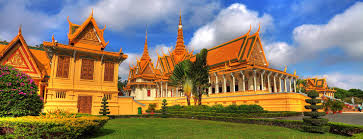 Party was the top vote recipient with 45.5% of the vote, followed by Hun Sen's Cambodian People's Party and the Buddhist Liberal Democratic Party, respectively. FUNCINPEC then entered into a coalition with the other parties that had participated in the election. The parties represented in the 120-member assembly proceeded to draft and approve a new constitution, which was promulgated September 24, 1993. It established a multiparty liberal democracy in the framework of a constitutional monarchy, with the former Prince Sihanouk elevated to King. Prince Ranariddh and Hun Sen became First and Second Prime Ministers, respectively, in the Royal Cambodian Government (RGC). The constitution provides for a wide range of internationally recognized human rights. On October 4, 2004, the Cambodian National Assembly ratified an agreement with the United Nations on the establishment of a tribunal to try senior leaders responsible for the atrocities committed by the Khmer Rouge. Donor countries have pledged the $43 million international share of the three-year tribunal budget, while the Cambodian government’s share of the budget is $13.3 million. The tribunal started trials of senior Khmer Rouge leaders in 2008.
Party was the top vote recipient with 45.5% of the vote, followed by Hun Sen's Cambodian People's Party and the Buddhist Liberal Democratic Party, respectively. FUNCINPEC then entered into a coalition with the other parties that had participated in the election. The parties represented in the 120-member assembly proceeded to draft and approve a new constitution, which was promulgated September 24, 1993. It established a multiparty liberal democracy in the framework of a constitutional monarchy, with the former Prince Sihanouk elevated to King. Prince Ranariddh and Hun Sen became First and Second Prime Ministers, respectively, in the Royal Cambodian Government (RGC). The constitution provides for a wide range of internationally recognized human rights. On October 4, 2004, the Cambodian National Assembly ratified an agreement with the United Nations on the establishment of a tribunal to try senior leaders responsible for the atrocities committed by the Khmer Rouge. Donor countries have pledged the $43 million international share of the three-year tribunal budget, while the Cambodian government’s share of the budget is $13.3 million. The tribunal started trials of senior Khmer Rouge leaders in 2008.

